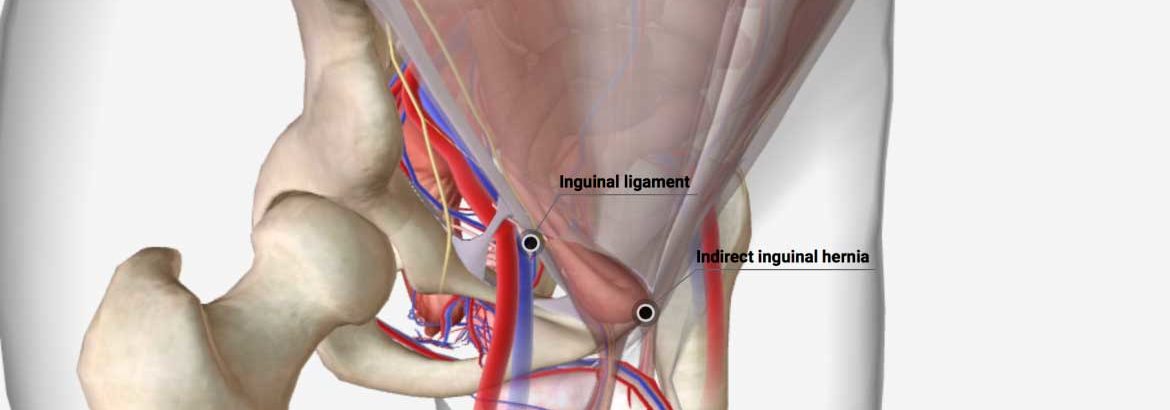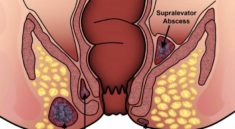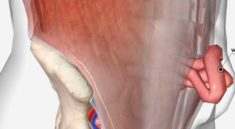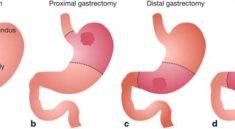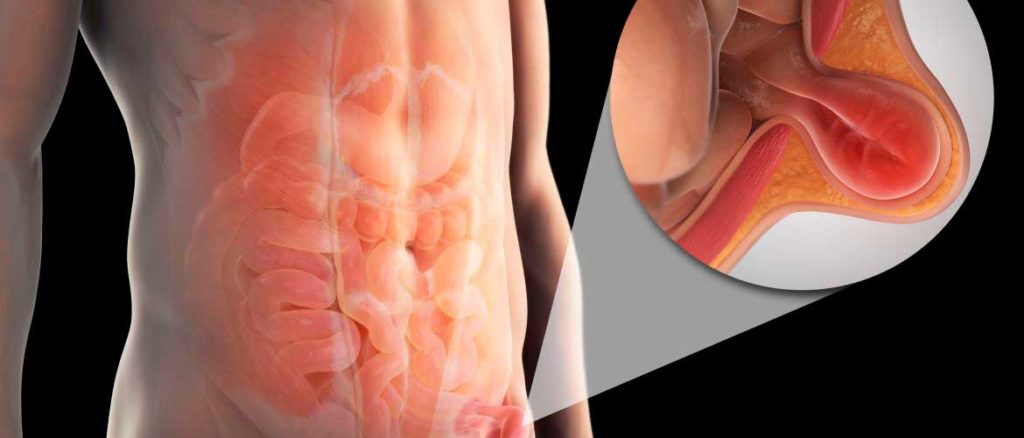
INFORMATION
INGUINAL HERNIA REPAIR
Inguinal hernia repair is surgery to repair a hernia in your groin. A hernia is tissue that bulges out of a weak spot in the abdominal wall. Your intestine may bulge out through this weakened area.
Description
During surgery to repair the hernia, the bulging tissue is pushed back in. Your abdominal wall is strengthened and supported with sutures (stitches), and sometimes mesh. This repair can be done with open or laparoscopic surgery. You and your surgeon can discuss which type of surgery is right for you.
Your surgeon will decide which kind of anesthesia you will receive:
- General Anesthesia is medicine that keeps you asleep and pain-free.
- Regional Anesthesia, which numbs you from the waist to your feet.
- Local Anesthesia
In open surgery:
- Your surgeon makes a cut near the hernia.
- The hernia is located and separated from the tissues around it. The hernia sac is removed or the hernia is gently pushed back into your abdomen.
- The surgeon then closes your weakened abdominal muscles with stitches.
- Often a piece of mesh is also sewn into place to strengthen your abdominal wall. This repairs the weakness in the wall of your abdomen.
- At the end of the repair, the cut is stitched closed.
In laparoscopic surgery:
- The surgeon makes three to five small cuts in your lower belly.
- A medical device called a laparoscope is inserted through one of the cuts. The scope is a thin, lighted tube with a camera on the end. It lets the surgeon see inside your belly.
- A harmless gas is pumped into your belly to expand the space. This gives the surgeon more room to see and work.
- Other tools are inserted through the other cuts. The surgeon uses these tools to repair the hernia.
- The same repair will be done as the repair in open surgery.
- At the end of the repair, the scope and other tools are removed. The cuts are stitched closed.
Before the Procedure
Tell your surgeon if:
- You are or could be pregnant
- You are taking any medicines, including drugs, supplements, or herbs you bought without a prescription
During the week before your surgery:
- You may be asked to stop taking blood thinning medicines. These include aspirin, ibuprofen (Advil, Motrin), clopidogrel (Plavix), warfarin (Coumadin), naprosyn (Aleve, Naproxen), and others.
- Ask your surgeon which drugs you should still take on the day of surgery.
On the day of surgery:
- Follow instructions about when to stop eating and drinking.
- Take the medicines your surgeon told you to take with a small sip of water.
- Arrive at the hospital on time.
After the Procedure
Most people are able to get out of bed an hour or so after this surgery. Most can go home the same day, but some may need to stay in the hospital overnight.
Some men may have problems passing urine after hernia surgery. If you have problems urinating, you may need a catheter. This is a thin flexible tube that is inserted into your bladder for a short time to drain urine.
Following instructions about how active you can be while recovering. This may include:
- Returning to light activities soon after going home, but avoiding strenuous activities and heavy lifting for a few weeks.
- Avoiding activities that can increase pressure in the groin and belly. Move slowly from a lying to a seated position.
- Avoiding sneezing or coughing forcefully.
- Drinking plenty of fluids and eating lots of fiber to prevent constipation.
Follow any other self-care instructions to help speed your recovery.
What to Expect at Home
After hernia repair:
- If there are stitches on the skin, they will need to be removed at a follow-up visit with the surgeon. If stitches under the skin were used, they will dissolve on their own.
- The incision is covered with a bandage. Or, it is covered with a liquid adhesive (skin glue).
- You may have pain, soreness, and stiffness at first, especially when moving about. This is normal.
- You will also feel tired after surgery. This can last for a few weeks.
- You will most likely return to normal activities in just a few weeks.
- Men may have swelling and pain in their testicles.
- There may be some bruising around the groin and testicular area.
- You may have trouble passing urine for the first few days.
Make sure gets plenty of rest the first 2 to 3 days after going home. Ask family and friends for help with daily activities while your movements are limited.
Managing Pain
Use any pain medicines as instructed by the surgeon or nurse. You may be given a prescription for a narcotic pain medicine. Over-the-counter pain medicine (ibuprofen, acetaminophen) can be used if the narcotic medicine is too strong.
Apply a cold compress to the incision area for 15 to 20 minutes at a time for the first few days. This will help the pain and swelling. Wrap the compress or ice in a towel. This helps prevent cold injury to the skin.
Wound Care
There may be a bandage over the incision. Follow the surgeon’s instructions for how long to leave it on and when to change it. If skin glue was used, a bandage may not have been used.
- A little bleeding and drainage is normal for the first few days. Apply antibiotic ointment (bacitracin, polysporin) or another solution to the incision area if the surgeon or nurse told you to.
- Wash the area with mild soap and water when the surgeon says it is OK to do so. Gently pat it dry. DO NOT take a bath, soak in a hot tub, or go swimming for the first week after surgery.
Diet During Recovery
Pain medicines can cause constipation. Eating some high-fiber foods and drinking plenty of water can help keep the bowels moving. Use over the counter fiber products if constipation does not improve.
Antibiotics can cause diarrhea. If this happens, try eating yogurt with live cultures or taking psyllium (Metamucil). Call the surgeon if the diarrhea does not get better.
Activity for Adults
Give yourself time to heal. You may gradually resume normal activities, such as walking, driving, and sexual activity, when you are ready. But you probably will not feel like doing anything strenuous for a few weeks.
DO NOT drive if you are taking narcotic pain medicines.
DO NOT lift anything over 10 pounds or 4.5 kilograms (about a gallon or 4 liters jug of milk) for 4 to 6 weeks, or until your doctor tells you it is OK. If possible avoid doing any activity that causes pain, or pulls on the area of surgery. Older boys and men may want to wear an athletic supporter if they have swelling or pain in the testicles.
Check with the surgeon before returning to sports or other high-impact activities. Protect the incision area from the sun for 1 year to prevent noticeable scarring.
When to Call the Doctor
Call the surgeon if you or your child has any of the following:
- Severe pain or soreness
- A lot of bleeding from your incision
- Difficulty breathing
- Light headedness that does not go away after a few days
- Chills, or fever of 101°F (38.3°C), or higher
- Warmth, or redness at the incision site
- Trouble urinating
- Swelling or pain in the testicles that is getting worse

